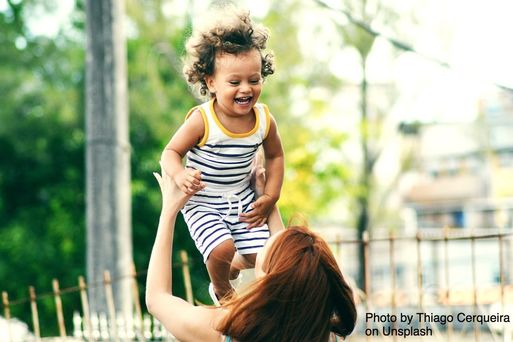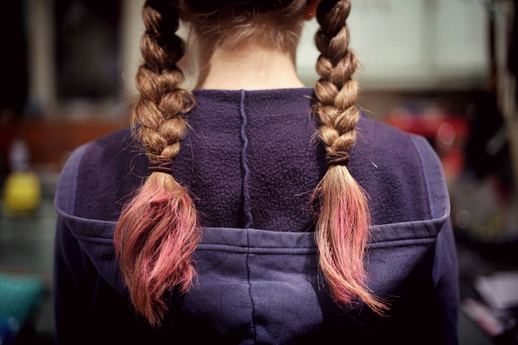|
as published in Natural Parent magazine, New Zealand Growing up in the 80s, the only time I recall hearing the word stranger was within a common remark made by grown-ups: “Don’t talk to strangers.” I didn’t think much of it. They all loved me; I took it as good advice. Strangers were people I didn’t know, and I didn’t feel a pressing need to talk with them much. Why was I being advised not to talk to strangers? Because of fear. There was a general cultural consensus that it wasn’t safe to talk to strangers. Thirty years later when my own daughter entered the world, I contemplated one question more than any other: How do I parent from Love, not fear? It’s a gigantic question. There is no one right answer. We each must choose to navigate the terrain of living — and parenting — from Love, one moment after another, one experience at a time, honoring our own truth. Yet we cannot choose both Love and fear at the same time. Fortunately, our children present us with an unparalleled invitation to choose Love. Do we want to teach our children to be afraid of people they haven’t yet met, or do we want to teach them to trust their own instincts? Having a fixed rule about not talking to strangers is parenting from fear. When a child is by default restricted from engaging with someone rather than expressing themselves naturally in that moment, the child is being taught fear. Many adults, many parents, live from this place of fear. And it’s sad. People can be mean and scrappy. I get it. At 11:00 on New Year’s morning I was harassed by a drunk man who reeked of cigarette smoke, hurling out his breath and aggressive questions as he slumped over my seat on the city tram. I was disgusted. But that was the exception. Normally, people are decent. I feel highly confident in my own instinctual sense of whether someone is respectful, and I want my daughter to feel that too. It’s up to me to help teach her that. We live and learn. Decades pass, parenting styles evolve. Never would I tell my daughter, “Don’t talk to strangers.” Instead, as we move through life, I support her freedom to interact with people as she desires. A more reserved child, she often sticks to her own space, uninterested in engaging with anybody she doesn’t know. But when she smiles at someone and tells me, “Mama, he smiled at me,” I say to her, “OK, nice, it feels good to smile, doesn’t it?” Or when she asks, “Mama, why did she smile at me?” I say, “Probably because it feels good to smile. And probably because she is kind.” My mind doesn’t run off into a dark fearful forest, afraid she is going to smile at someone and the worst case scenario will erupt. And I guess that’s because I don’t want to live in fear. With children who are effusively outgoing, perhaps there are different ways to guide, or perhaps some of this flavor of guidance still applies. In the past seven months living in Scandinavia, my daughter has had about 10 encounters with strangers that have built her self confidence muscles. Usually it’s on the bus or train, we’re sitting near someone, and they smile at her. She smiles back, then tells me about it. I give her space to have the experience on her own, without me needing to be part of the smile exchange, or the words they exchange… usually a question about whether she speaks Swedish. No, I wouldn’t let her go off on the bus by herself at four years old. Yes, I stay close to her anytime she’s in my care because she has entrusted me as her primary guide and I take that role seriously. Yes, there are creepy-ish moments like yesterday when a man with a belly bulging big out of his pants, Coca-Cola in one hand, smiled at her and she turned to me and said, “Mama why are his eyes like that?” Trusting my own sense of things, I waited a moment to casually look and see what she was referring to. I saw his gray eyes. There seemed to be sickness in them. When we got off the train I asked her, “What did his eyes look like?” She stopped, scrunched up her face, made her eyes beady and constrained, and said, “Like this.” She sees. She senses.
Children are tuned in. Except when they’re not. Each child is their own masterpiece. Each child offers us an invitation to co-lead with that child, and no human being is always in-tune. So we dance with that too. Life was never said to be totally safe. Yet building a child’s sense of self confidence, to trust their own instincts and sense of other people, is safer than teaching them fear. Modeling plays a big role. Much of what our children learn about how to interact with others comes from what they see us do. And again, just as each child has his own personality, each of us parents has ours. Two months ago while my daughter and I sat on a train, a mother (about 55) and daughter (in her 20s) boarded the train with luggage. Instinctively I moved over to make space for the younger girl who hadn’t found a seat. The two of them seemed open, with a unique effusive kindness about them. I felt it. So I started talking with them. Their eyes lit up, as if surprised. Turns out they were visiting Sweden from Germany. We had a bright-spirited interaction for about eight minutes until my daughter and I reached our stop. I pulled out a business card, gave it to them, and the very next week the daughter emailed me. We’re Instagram buddies now and heck, who knows, maybe one day we’ll see each other again. From a smile, to a thoughtful gesture, there we were talking. Talking with strangers. My daughter never spoke up because she has her own style, yet she watched me, taking it all in with her brilliant young brain, making mental notes on how she might want to be like Mama and how she might not — yet headlining it all, she had an in-the-bones experience of joyful connection between people who had just met. We were strangers. Now we’re friends. People are basically good. Let’s accept that. We’ve all got an inner jerk, and we are basically good. We are wired for Love. Fear is no good way to live. Let us each interact with people how Love guides us to. When we see someone with a beautiful knit sweater, we can compliment them. Nothing lost. Let our children see us expressing kind words and gestures, untethered to the “watch out” past that restricted our urge to show Love. When our children move through this world, may they feel free to fill it with a little more kindness. A smile can go a long way in brightening someone’s life, at least until the next smile comes along.
1 Comment
Stephanie
2/27/2018 07:43:59 am
I love this. Children really are very intuitive and sensitive to facial expressions and body language. Guidance in honing these innate skills is more valuable than blanketing the world in fear.
Reply
Your comment will be posted after it is approved.
Leave a Reply. |
AuthorJessica Rios, Founder of Leaning into Light, was born with a divine pen in her pelvis. Her heart writes for her; Love is her 'religion'. A lifelong letter writer and a thought leader in Love, her blog is devoted to her greatest passion: illuminating the beauty of the human spirit so we all move closer to remembering that Love is Who We Are. Categories
All
Archives
April 2024
|





 RSS Feed
RSS Feed